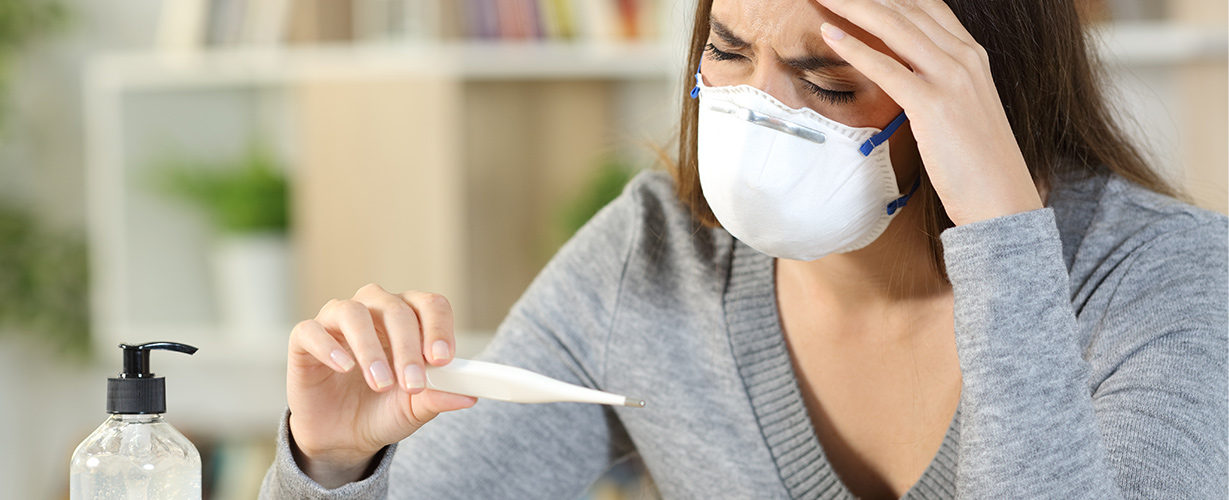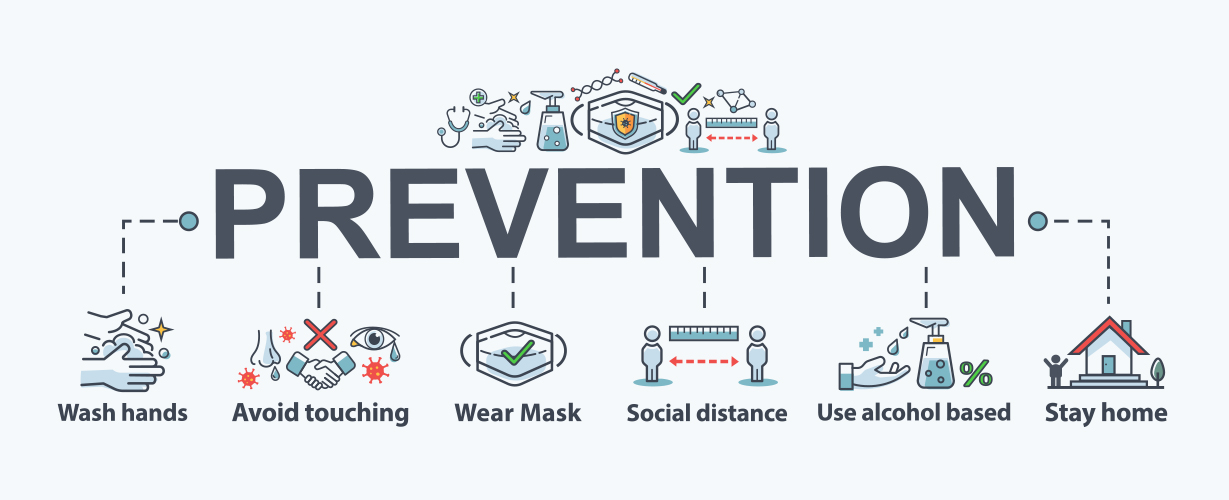Let’s start by knowing the virus better:
What is the COVID-19 virus?
COVID-19 is a new strain of coronavirus that has not been previously identified in humans. It was first identified in Wuhan, Hubei Province, China, where it has caused an extensive and ongoing outbreak. It has since spread more widely in China.
Cases have since been identified in several other countries. The COVID-19 virus is closely related to a bat coronavirus.
There is much more to learn about how COVID-19 is spread, its severity, and other features associated with the virus; epidemiological and clinical investigations are ongoing.
Outbreaks of new coronavirus infections among people are always a public health concern. The situation is evolving rapidly.
How is the virus spread?
Human coronaviruses are spread from someone infected with the COVID-19 virus to other close contacts with that person through contaminated droplets spread by coughing or sneezing or by contact with contaminated hands, surfaces, or objects.
The time between when a person is exposed to the virus and when symptoms first appear is typically 5 to 6 days, although it may range from 2 to 14 days. For this reason, people who might have been in contact with a confirmed case are being asked to self-isolate for 14 days.
Most COVID-19 cases appear to be spread from people who have symptoms. A small number of people may have been infectious before their symptoms developed.
How long does COVID-19 last on surfaces?
According to the World Health Organization, it is not certain how long the virus that causes COVID-19 survives on surfaces. Still, it seems to behave like other coronaviruses. Studies suggest that coronaviruses (including preliminary information on the COVID-19 virus) may persist on surfaces for a few hours or up to several days. This may vary under different conditions (e.g., type of surface, temperature, or humidity of the environment).
If you think a surface may be infected, clean it with a common household disinfectant to kill the virus and protect yourself and others. Clean your hands with an alcohol-based hand rub or wash them with soap and water. Avoid touching your eyes, mouth, or nose.
What are the symptoms of novel coronavirus (COVID-19)?
The range of reported symptoms for novel coronavirus continues to evolve, but practitioners have agreed that common symptoms include:
- Respiratory symptoms
- Fever
- Cough
- Shortness of breath
- Breathing difficulties
In more severe cases, the infection can cause pneumonia, severe acute respiratory syndrome, kidney failure and even death.
However, several patients who have been reported as infected by COVID-19 have been treated at hospitals and released within a few days.

Protecting yourself against infection
The best way to protect yourself is the same as you would against any respiratory infection. Practice good hygiene by:
1) Making sure to clean your hands thoroughly for at least 20 seconds with soap and water, or an alcohol-based hand rub.
2) Cover your nose and mouth when coughing and sneezing with a tissue or a flexed elbow, dispose of tissues immediately and safely.
3) Avoid close contact with anyone with cold or flu-like symptoms.
4) If you have returned from a country or region at high or moderate risk for COVID-19 you should closely monitor your health. If you develop symptoms including fever and cough, you should isolate yourself immediately and urgently seek medical attention.
If you believe you may have been in close contact with a confirmed case of coronavirus, you should also monitor your health and seek urgent medical attention.
Let’s talk about Social & Physical distancing during the COVID-19 times:
Social distancing is an effective measure in avoiding infection, but it is recognized that it cannot be practised in all situations, and the aim is to generally reduce the potential for transmission.
While practising social distancing, you can travel to work (including public transport). For non-essential activities outside the workplace or attendance at schools, universities, and childcare - social distancing includes:
- avoiding crowds and mass gatherings where it is challenging to keep the appropriate distance away from others
- avoiding small gatherings in enclosed spaces, for example, family celebrations.
- attempting to keep a distance of 1.5 meters between themselves and other people where possible, for example, when they are out and about in a public place.
- avoiding shaking hands, hugging, or kissing other people.
- avoiding visiting vulnerable people, such as those in aged care facilities or hospitals, infants, or people with compromised immune systems due to illness or medical treatment.
What to do if you believe you have symptoms?
If you display symptoms such as:
- fever, cough
- runny nose
- shortness of breath
You should self-isolate yourself until you can arrange to be tested by a medical professional.
If you are sharing your home with others, you should stay in a different room from other people or be separated as much as possible.
Wear a surgical mask when you are in the same room as another person, and when seeking medical care. Use a separate bathroom, if available.
Make sure that you do not share a room with people who are at risk of severe diseases, such as elderly people and those who have heart, lung, or kidney conditions, and diabetes.
Visitors who do not have an essential need to be in the home should not visit while you are isolating.
If you are in isolation, you should alert your employer immediately through your standard processes.
Depending on your type of work, and provided you are well, you may want to discuss alternative arrangements such as working from home.

About Hoteliers: Facilitating guests’ isolation
If a guest advises you or your hotel team that they are displaying symptoms, they should be isolated.
If a guest advises you as a team member, you should inform the hotel management immediately.
The hotel will identify an area in the hotel where your guests may stay. Guests are not to engage with other guests or receive visitors. Hotel staff should be able to deliver food and other supplies that the guest may require; please refer to specific hotel procedures.
Best practice includes:
- Supplying isolated guests with a surgical mask to wear if room service and housekeeping services are provided.
- While guests are alone in their rooms, there is no need for them to wear a mask.
- If a guest needs to leave the hotel, such as to seek medical care, they must wear a mask.
- Isolated guests are not to use hotel facilities, such as restaurants, cafes, pools, gymnasiums, and business centres.
Providing services to isolated guests:
Isolated guests should be limited to only essential services such as cleaning and room service.
Actions to take
Here are some examples of proactive actions you can take to minimize infection in the workplace:
Housekeeping
Food and Beverage
Front Office
Administration and Management
Public Areas
- Ensure you disinfect or wash your hands before and after putting your gloves on.
- Ensure all high-touch surfaces are cleaned regularly, including handrails, lift buttons, public areas, toilets, and door handles.
- Ensure you wash your hands between each task.
- Ensure hand sanitiser is topped up and empty bottles replaced regularly.
- Always wash your hands thoroughly before breaks, especially meal breaks.
What happens after an Incident?
Prepare
Being prepared before an incident can make all the difference in how the media responds in the critical, early hours of the incident.
Predict
Anticipate all the things that occur at your hotel. Identify the issues – these can include guest isolation, team communication, the services and amenities offered, and outside events that cannot be controlled.
Position
To the extent possible, decide what the hotel position will be on these issues.
Prevent
Take preventative measures. Often unnecessary issues can be eliminated by implementing effective communication and a training program.
ADDITIONAL INFORMATION about Coronavirus (COVID-19) Situation
Here you will find the latest situation updates and data regarding the COVID-19 outbreak.
Source: WHO - https://who.int
Contact us if you want to learn more!







